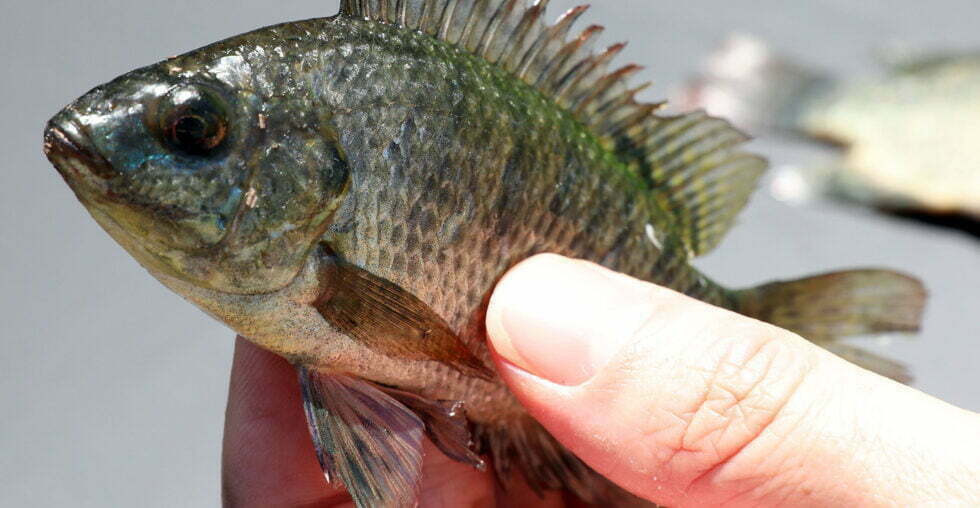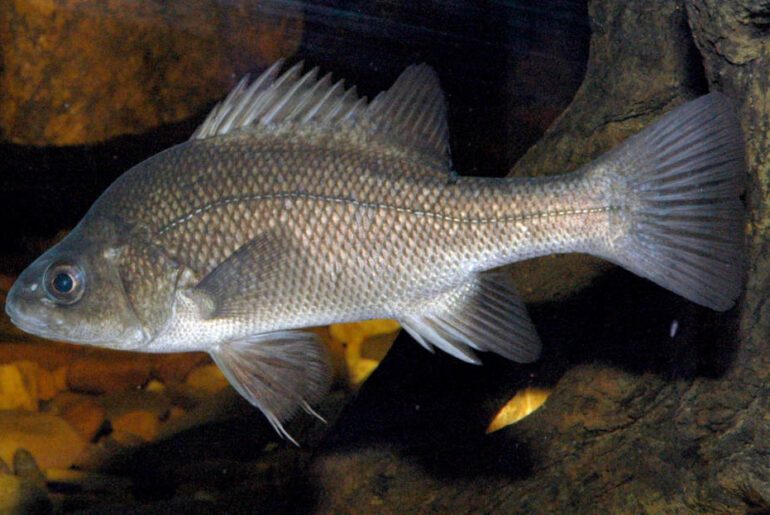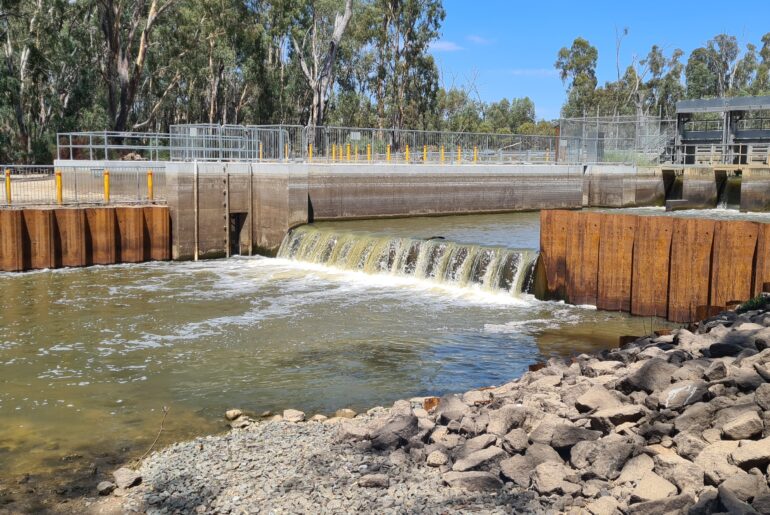Just over 40 years after introduction into the wild near Brisbane, Mozambique tilapia (Oreochromis mossambicus) are now widespread throughout coastal catchments in Queensland and crossed the border into the New South Wales Tweed catchment for the first time in 2014. In 2022, Australia reported the greatest number of new Tilapia invasions globally, with new populations in Queensland and New South Wales.
Tilapia are expected to adversely impact 19 of the 46 species of native fish in the Murray-Darling Basin; either through direct predation, introduction of diseases, competition for food and habitat, and/or habitat destruction. Impacts on water quality through increased nutrient cycling, winter die-offs, loss of aquatic vegetation and nest construction are also predicted.
High risk
Several Tilapia infested catchments border the north-eastern section of the Murray-Darling Basin. In some locations, such as the Lockyer catchment, Tilapia have been observed within 10 km of the Murray-Darling Basin. Human assisted movement (intentional or accidental) of Tilapia is the biggest threat and most likely pathway for a Murray-Darling Basin incursion.
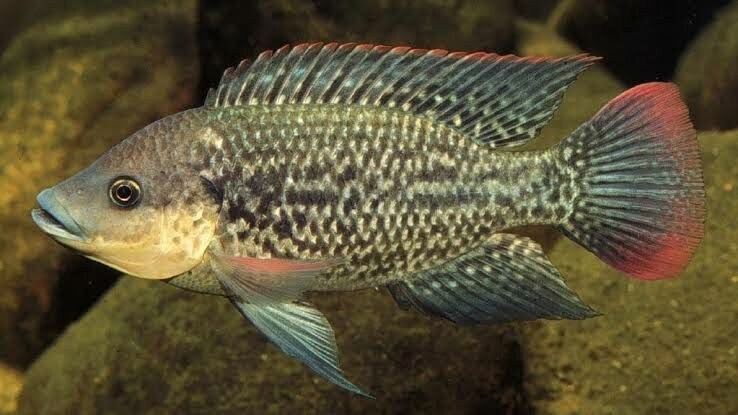
The Condamine and Border Rivers catchments in the north-east of the Murray-Darling Basin are the highest risk areas for a Tilapia incursion due to their close proximity to infested Queensland catchments. However, with human assisted movement Tilapia could turn up anywhere.
Basin reports
In 2017, a suspected Tilapia sighting was reported in the Barwon River in western New South Wales. Fortunately, subsequent monitoring by New South Wales Department of Primary Industries failed to detect the presence of Tilapia in the area, and officers concluded that the report was most likely a misidentification. Alarmingly, this misidentified Tilapia catch was not reported to authorities for nearly three months. In a system like the Barwon Darling, eradication or even control of Tilapia three months after introduction would have been impossible in all but the lowest of flow conditions (i.e. unless the system ceased to flow). Advisory materials have been reissued to this and other areas of New South Wales to increase efforts for rapid reporting of future suspect reports of Tilapia.
Water temperatures across large areas of the northern Murray-Darling Basin are suitable for Tilapia breeding for approximately six months of the year (warmer months). During a six-month breeding season, females would be able to brood at least five times, significantly increasing the introduced population and hindering eradication efforts further. Tilapia can also effectively move upstream and downstream. In the Burdekin River, northern Queensland, Tilapia were recorded spreading 3,000 km just four years after introduction.

Control options
Tilapia eradication management options are largely limited to the use of rotenone, which has strict conditions for its use under an Australian Pesticides and Veterinary Medicines Authority Permit. Rotenone is a naturally occurring plant derived chemical, which inhibits cellular respiration, and has seen unintended consequences for native fish. Lethal concentrations of rotenone are non-selective to fish, killing all fish in the treated area. As such, its use in pest fish control must make both ecological and economic sense and is largely limited to use in small waterways and storages that can be isolated from surrounding waters with regulating structures or bunds.
Other control tools for Tilapia include electrofishing and chemical applications, however, education is the most important tool to prevent additional incursions.
Incursions outside the Murray-Darling Basin
In 2017, another report was made of a Spotted tilapia (Tilapia mariae) sighting in the Walsh River, part of the Mitchell River Catchment in Far North Queensland. The Walsh River (previously thought to be Tilapia free) is a western flowing waterway that drains into the Gulf of Carpentaria where productive commercial and recreational prawn and Barramundi fisheries exist. Biosecurity Queensland have confirmed Spotted tilapia are present in the Walsh River. Media coverage of this news generated further independent community reports of Tilapia presence in the nearby Mitchell River for two years. Despite extensive electrofishing and netting at the reported locations in the Mitchell River, Biosecurity Queensland has failed to validate those reports.
The extent of the Walsh River Tilapia infestation is still being investigated. With the wet season in far north Queensland underway, Tilapia will likely spread further throughout the catchment towards the Gulf. The rugged remoteness and presence of crocodiles in many areas complicates the management response even further.
In 2008, the Endeavour River Catchment in North Queensland became infested after a private landholder deliberately stocked property dams with Mozambique tilapia. Subsequent flooding events saw the Tilapia spread to nearby Jensens Crossing on the Endeavour River. The catchment is now infested and eradication not possible.
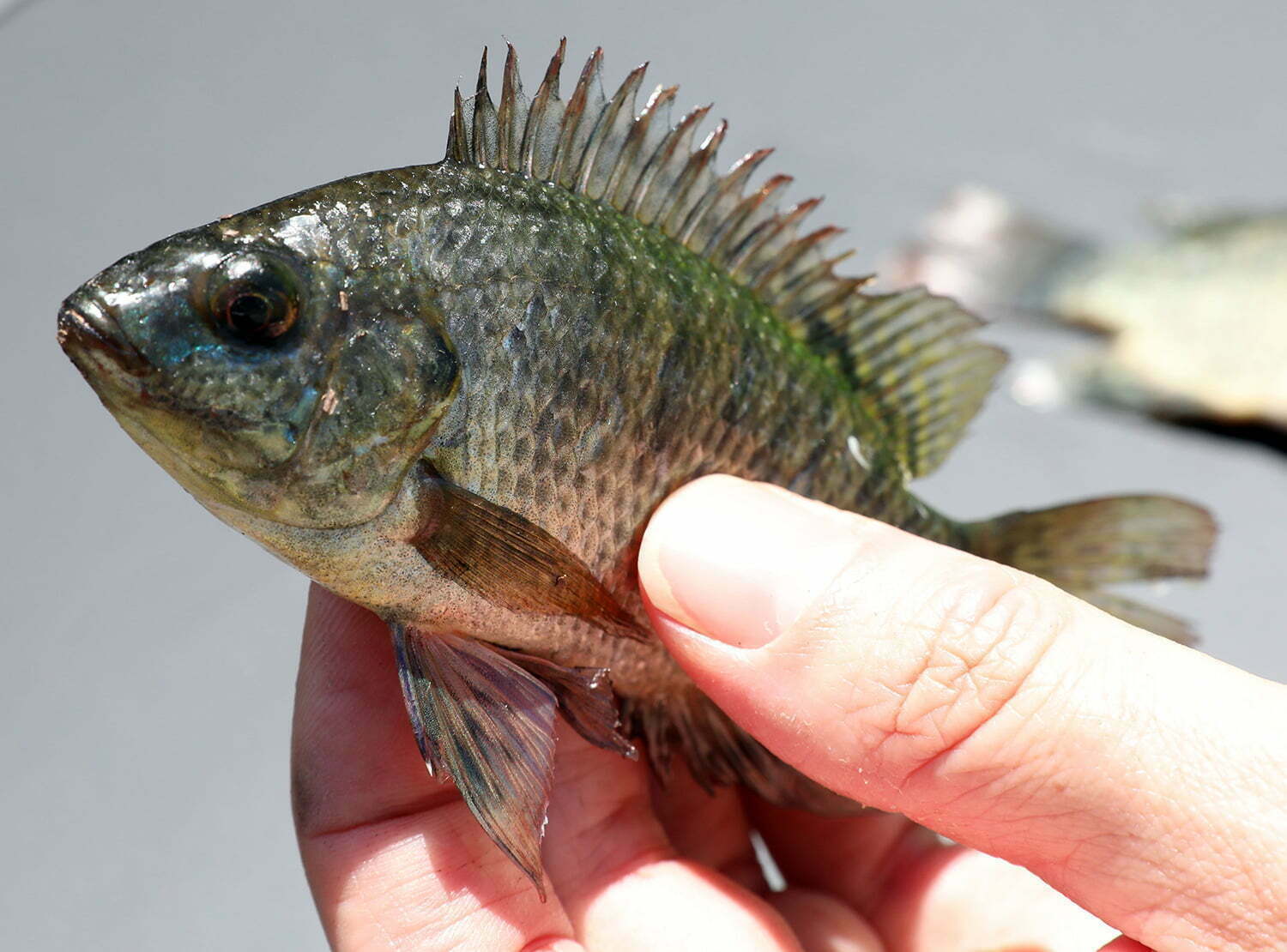
Community awareness
The vast and largely remote expanse of the Murray-Darling Basin makes monitoring for potential Tilapia incursions extremely difficult. River users, recreational fishers, landholders, local government and natural resource management agencies play a critical role in both keeping Murray-Darling Basin free of Tilapia, as well as being the ‘eyes and ears’ on the ground.
Social and economic impacts of a Tilapia incursion are also a reality. Costs associated with eradication and management, increased water treatment, winter die-off clean ups, and losses in recreational fishing trade and tourism may all potentially impact Murray-Darling Basin communities.
Recent examples of new Tilapia incursions in far north Queensland and northern coastal New South Wales are a significant concern. Despite education and awareness programs and strict regulatory controls, Tilapia are still being moved between catchments.
Without doubt the best form of Tilapia control in the Murray-Darling Basin is prevention.
How you can help
- Learn how to correctly identify Tilapia
- Don’t keep Tilapia in home aquaria, ponds or dams, it is illegal! Report any sales of Tilapia to the appropriate authorities
- Don’t throw caught Tilapia back into a waterway, it’s illegal – kill the fish humanely, take a photo and either bury them or put them in a bin
- Don’t use Tilapia as bait (dead or alive)
- Report Tilapia catches and sightings, illegal movement or stocking as soon as possible
The Keep Tilapia Out project is supported through funding from the Murray-Darling Basin Authority.
Tilapia identification, reporting and further information:
Queensland
Information and identification: Department of Agriculture and Fisheries
Report by phone: 13 25 23
Report online here.
Report by email: pestfish@daf.qld.gov.au
New South Wales
Information and identification: Department of Primary Industries
Report by phone – (02) 4916 3877
Report online here.
Report by email: aquatic.pests@dpi.nsw.gov.au
References
Hutchison M., Sarac Z. and Norris A. (2011) Mozambique Tilapia, the Potential for Mozambique Tilapia (Oreochromis Mossambicus) to Invade the Murray-Darling Basin and the Likely Impacts: a Review of Existing Information. Murray-Darling Basin Authority, Commonwealth of Australia.
The State of Queensland (2011) Stop the Spread Tilapia Training Package. The State of Queensland, Department of Employment, Economic Development and Innovation, Brisbane.
Related stories:
https://finterest.com.au/raising-awareness-and-preventing-tilapia-incursion-in-the-mdb/
